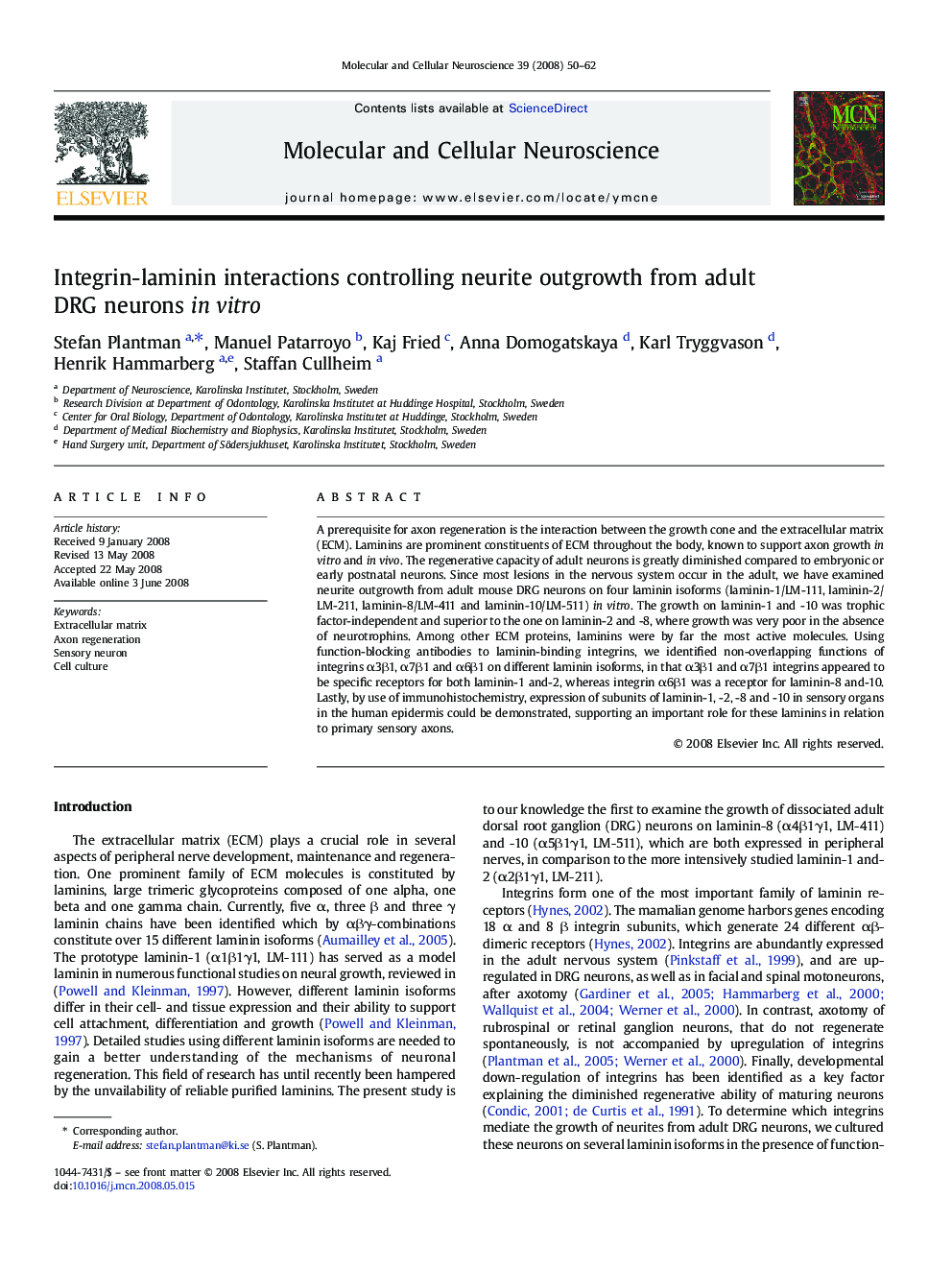| Article ID | Journal | Published Year | Pages | File Type |
|---|---|---|---|---|
| 2199001 | Molecular and Cellular Neuroscience | 2008 | 13 Pages |
A prerequisite for axon regeneration is the interaction between the growth cone and the extracellular matrix (ECM). Laminins are prominent constituents of ECM throughout the body, known to support axon growth in vitro and in vivo. The regenerative capacity of adult neurons is greatly diminished compared to embryonic or early postnatal neurons. Since most lesions in the nervous system occur in the adult, we have examined neurite outgrowth from adult mouse DRG neurons on four laminin isoforms (laminin-1/LM-111, laminin-2/LM-211, laminin-8/LM-411 and laminin-10/LM-511) in vitro. The growth on laminin-1 and -10 was trophic factor-independent and superior to the one on laminin-2 and -8, where growth was very poor in the absence of neurotrophins. Among other ECM proteins, laminins were by far the most active molecules. Using function-blocking antibodies to laminin-binding integrins, we identified non-overlapping functions of integrins α3β1, α7β1 and α6β1 on different laminin isoforms, in that α3β1 and α7β1 integrins appeared to be specific receptors for both laminin-1 and-2, whereas integrin α6β1 was a receptor for laminin-8 and-10. Lastly, by use of immunohistochemistry, expression of subunits of laminin-1, -2, -8 and -10 in sensory organs in the human epidermis could be demonstrated, supporting an important role for these laminins in relation to primary sensory axons.
